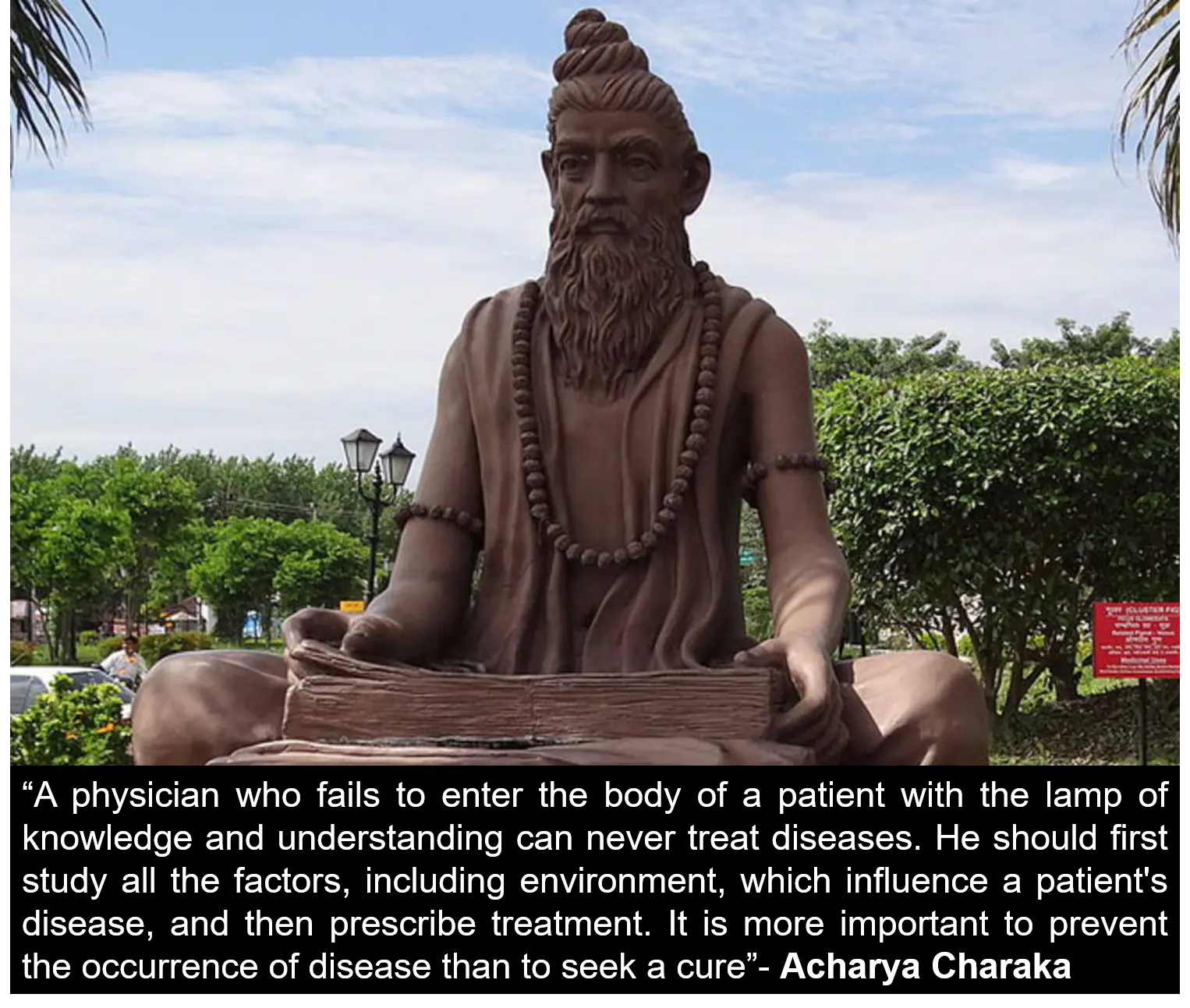“ॐ धन्वंतरये नमः”॥
'Oh Lord Shri Dhanvantri, I bow humbly to you with prayers'

Ayurveda- The Mother of All Healing!
Much before mankind learnt about life sciences, much before any other discipline of medicine could even be conceived, one discipline of life science had evolved into a complete treatise on the prevention and cure of human ailments. “Ayurveda”, one of the world’s oldest holistic, “whole-body” healing systems developed more than 3,000 years ago in India.
Ayurveda (‘Ayur’ means Life and ‘Veda’ means Knowledge), the science of life. It is based on the belief that health and wellness depend on a delicate balance between the mind, body, and spirit. Its main goal is to promote good health, not fight disease. But treatments may be geared toward specific health problems.
In the United States, it’s actively recognized as a form of complementary and alternative medicine (CAM). It’s abundantly clear that Ayurveda (आयुर्वेद) doesn’t merely constitute a medical system but also actively serves as a way of life promoting comprehensive well-being and spiritual attainment. Proficiency in Ayurveda actively empowers individuals to comprehend how to actively establish this equilibrium of body, mind, and consciousness according to their unique constitution and how to actively implement lifestyle adjustments to achieve and sustain this equilibrium.
What is Ayurvedic Medicine?
Charaka Samhita, also known as the Compendium of Charaka, defines Ayurveda as the science that addresses the advantages, disadvantages, happy, and unhappy states of life, along with what is beneficial and harmful for life, its measurement, and life itself (Charaka Sutra 1 – 4). It stands as one of the foundational texts on Ayurveda, written in Sanskrit before the 2nd century, comprising eight books and one hundred twenty chapters. Acharya Charaka, often hailed as the father of Ayurveda, is a key contributor to the Charaka Samhita.
Ayurveda encompasses all forms of life, both animate and inanimate. It is categorized into three primary branches: Nara Ayurveda, focusing on human life; Satva Ayurveda, the science dealing with animal life and its ailments; and Vriksha Ayurveda, the science dealing with plant life, its growth, and associated diseases. The Sushruta Samhita is another crucial codified document in the field of Ayurveda. The Sushruta School primarily emphasizes surgical procedures and techniques, whereas the Charaka Samhita primarily delves into internal medicine. The Suśrutasaṃhitā holds immense historical significance, as it encompasses chapters that offer unique insights into surgical training, instruments, and procedures.


Principles of Ayurveda
Ayurveda posits that five elements compose the entire universe: Air (Vayu), Water (Jala), Space or ether (Aakash), Earth (Prithvi), and Fire (Teja). These elements, referred to as Pancha Mahabhoota in Ayurveda, are believed to combine to form the three basic humors of the human body in various proportions. The three humors—Vata dosha, Pitta dosha, and Kapha dosha—are collectively known as “Tridoshas.” They oversee the fundamental physiological functions of the body, along with five sub-doshas for each of the principal doshas.
“Vata dosha” actively maintains cellular transport, electrolyte balance, and waste product elimination, with its effects heightened by dryness. “Pitta dosha” takes charge of regulating body temperature, coordinating optic nerves, managing hunger, and controlling thirst. Pitta aggravates under conditions of bodily heat. “Kapha dosha” actively provides lubrication to the joints for proper functioning and increases due to the consumption of sweet and fatty foods. Vata is believed to govern the catabolism of the body, Pitta oversees metabolism, and Kapha manages anabolism.
To maintain a healthy state, it is essential to actively balance the three doshas and other factors. Any imbalance among the three actively leads to a state of illness or disease.
